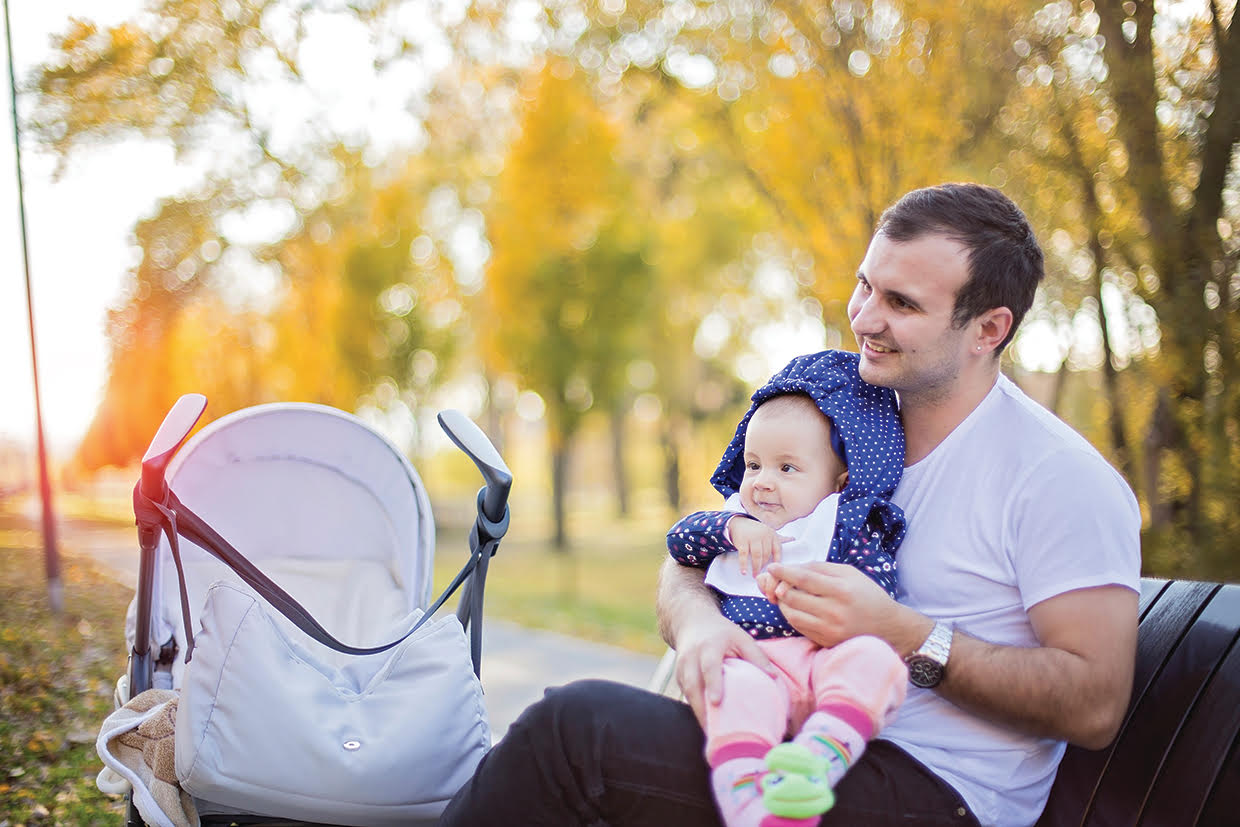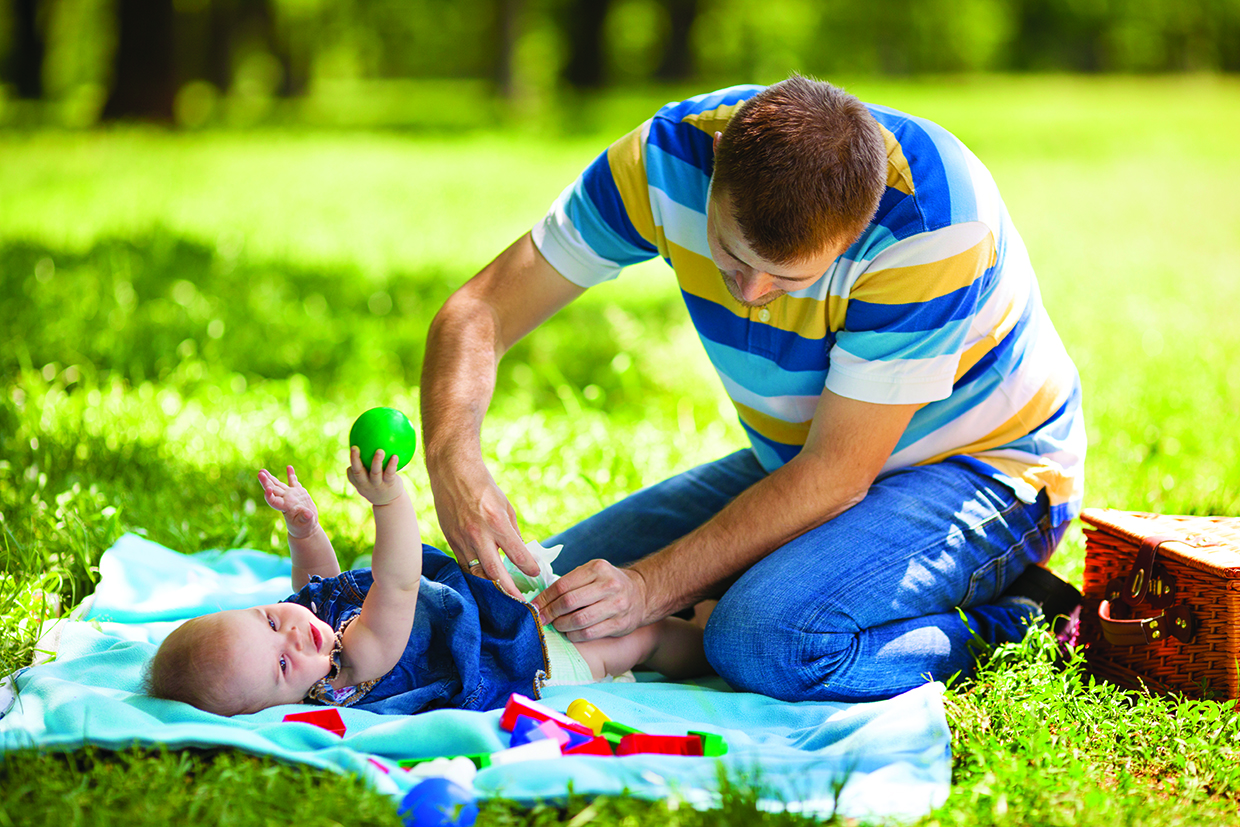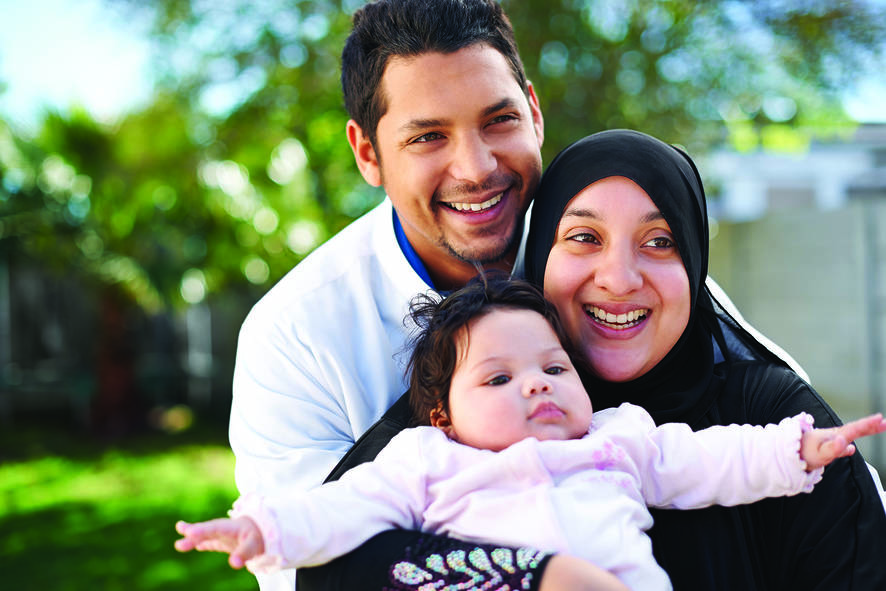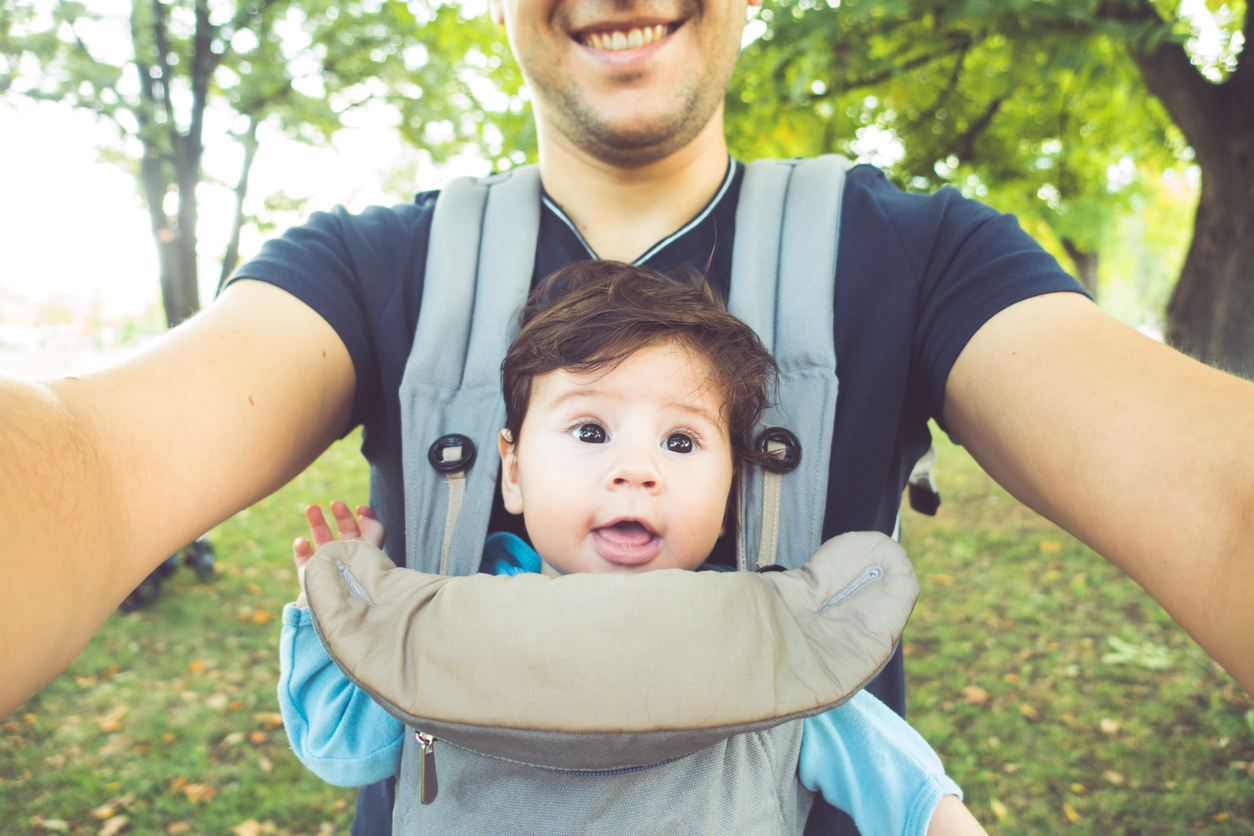
Ask DadPad, Being a Dad
Ask DadPad: Out and about with your baby
Posted on 13th July 2020
As our lockdown restrictions start to ease here in the UK, you might be thinking about making more trips out and about with your baby. Heading off together – whether it be for just an hour, or the whole day – can often feel like the most complicated logistical nightmare when you have a baby in tow, but we’re hoping that this article might help to make things a bit easier.
One of the most important things to have organised is a baby bag, containing all the necessary items for baby whilst you’re out.
The two main things that you’ll need to prepare for are:
- feeding baby
- changing baby
Feeding time
Obviously, what you’ll need for feeding will depend on a lot of things, including:
- how long you’re going out for;
- how baby is being fed (i.e. breastfeeding or formula-feeding); and
- whether mum is coming with you.
If you might need to bottle-feed baby whilst you’re out, it’s important to remember the need for bottles to be sterile and for the milk to be freshly-prepared. The general recommendation is always to prepare a feed as and when baby needs it, to avoid the risk of baby getting ill. There are a few ways to do this, and you might like to speak to your Health Visitor about options, but probably the easiest is to buy a ready-made carton of baby milk which you then open, pour into your sterilised bottle and warm up when baby is ready to feed. If baby is being breastfed but is used to drinking this from a bottle, you can take this with you – the NHS advise that breast milk which has already been cooled in the fridge can be safely carried in a cool bag with ice packs for up to 24 hours.
As well as the bottles and related equipment, the other thing that you might want to have to hand if you’re going to feed whilst you’re out is:
- a bib – to protect her clothes from any spills; and
- a muslin, or ‘burp cloth’ – really useful for cleaning up any bits of milk that baby might spit out after she’s been fed. They are also brilliant for throwing over your shoulder before you try and ‘wind’ baby – after all, having a trail of burped-up milk all down your back is never the best look!
As baby gets older, you might also want to include some age-appropriate snacks. Keeping them in a little plastic pot makes accessing and storing them much easier.

All change!
Of course, what goes in will inevitably have to come out, and you therefore also need to be prepared for nappy changes. The core items here will be:
- a travel-sized changing mat – essential, wherever you think that you might be changing baby, as it will protect her from any not-100%-clean surfaces that you might need to lie her on, but also to ensure that you don’t soil anything that she’s lying on (e.g. your beautiful picnic blanket);
- more spare nappies than you reasonably think that you might need – always be prepared! If you are using cloth/non-disposable nappies, you will need to include all the relevant elements for a change – e.g. liners and spare covers might be required, depending on the type of nappy that you have;
- a plentiful supply of wipes and other supplies that you usually use – e.g. nappy rash cream;
- something to take your dirty nappies and wipes home in – most people will use disposable plastic nappy sacks, but you can also now get various reusable ‘wet bags’ which do the same job. Remember, though, the dangers of plastic nappy sacks – always keep and store them well out of the reach of your baby, to avoid possible suffocation. These sacks and bags are also useful for safely storing wet and dirty clothes away from the rest of the contents of the baby bag, until you’re back within range of a washing machine; and
- at least one full change of clothes for baby – because you never know how that nappy change might go!
We’ve got advice on changing your baby’s nappy on our Ask DadPad: How do I care for my baby? blog post.

What not to take…
- Anything that might leak or spill – if you’re taking out boiled water for making up a feed for baby, or a water drink in a sippy cup for an older child, make sure that all lids/covers are tightly-secured and, wherever possible, that the container remains upright in the bag. When you’re needing to give baby a full change after a ‘poo explosion’, you don’t want to discover that all your carefully-packed spare clothes are soaking wet from a spill incident…
- A loose banana! Something that many of us have learnt to our cost is that a lone banana will inevitably end up making its way to the bottom of the bag, get squashed and leave a dreadful, stinky mess all over your bag and its contents. If your toddler absolutely adores bananas and can’t survive without one, then find a plastic storage box and pop it safely in there instead.
- Lots of toys – aside from the space that they will take up in your already quite-full bag, the danger of course is that they will get lost, potentially causing great distress. The best course of action, when heading out and about, is only to have toys that can be safely attached to the pram or pushchair. Spending hours retracing your steps through the town centre, frantically scanning the pavements, street benches and shop shelves for your child’s much-loved toy, whilst said child is screaming her head off, is never a pleasant experience!
Four seasons in one day?
It might seem obvious, but don’t forget to check the weather forecast before you head out.
- If it might rain, think about how you’re going to keep baby dry. Some prams and pushchairs will have a rain cover, so you might want to either put it on before you leave, or have it packed and ready (e.g. in the shopping tray). Make sure that you have a few practice runs, in the comfort and dry of your own home, so that you become confident in knowing how to attach it before you have to do it for real!
- Make sure that baby is dressed appropriately. Especially when they’re very small, it’s our responsibility as parents to help them regulate their own body temperatures. This means making sure that they’re warm enough during a colder spell of weather, and that they don’t overheat on a hot day. Regularly feel the back of baby’s neck or her chest to check that she’s not getting too hot, and remember that she might need to drink more fluids in the heat.
- On a hot, sunny day, make sure that you have all the right protective equipment. You will need to ensure that both her eyes and her skin are protected from the sun. Ideally, for a young baby, get a sunshade of some form so that she can stay completely in the shade. You should always avoid covering a pram with a blanket or sheet, though, as this can cause baby to overheat; you’ll also be unable to keep an eye on your baby if she’s completely covered up. Older children will need suncream, a hat with a brim and – ideally – sunglasses.

Travelling in style
One other consideration before you head out is how you are planning on transporting your baby. The main options are going to be either your pushchair/pram, or a sling/baby carrier. We’ve set out some considerations for each of these options below:
Using a pram or pushchair:
Great for…
- Keeping baby protected from the weather – e.g. by using raincovers/sunshades etc
- Storage, as there will be a tray, or similar, under the pram or pushchair in which to put (some) shopping or other essentials
- Enabling baby to lie flat for sleeping
But might not be so good for…
- Getting in and out of doorways, around shop aisles, and up and down steps/ pavements/etc
- Use on uneven terrain (e.g. cobbled streets, ‘off road’ on country walks)
- Giving you a spare hand or two for other requirements – e.g. to carry a shopping bag or umbrella etc
Using a sling or baby carrier:
Great for…
- Enabling you to remain ‘hands free’, so you’re more easily able to carry or pick up other items and also to touch/comfort baby as needed
- Keeping baby close to you at all times, which is comforting for both of you
- Giving baby opportunities to look out at the world around them, and/or to engage in face-to-face contact with dad (depending on the style of carrier used)
But might not be so good for…
- Cold or wet days, when you’re wearing thick clothes and/or a coat, as you can end up feeling very bulky. Depending on baby’s age/the design of the carrier, it can also be quite heavy
- Keeping baby protected from the weather
- Getting baby in and out of the carrier (e.g. when getting out of/into the car, or for changing their nappy or feeding them). This can take practice, and in the early days be especially difficult if you’re out on your own with baby
We have more information on how to wear your baby correctly in a sling in our new Quick Read DadPad.

SOURCES OF FURTHER INFORMATION:
Safe preparation of baby bottles whilst you’re out and about– via Babycentre website.
Safe storage of expressed breast milk – via NHS website.
Keeping baby safe in the sun – via Lullaby Trust website.
Keeping baby safe around nappy sacks – via RoSPA website.
Further information on slings and baby carriers – via Babywearing.co.uk website, including a guide to choosing a sling or a baby carrier.

